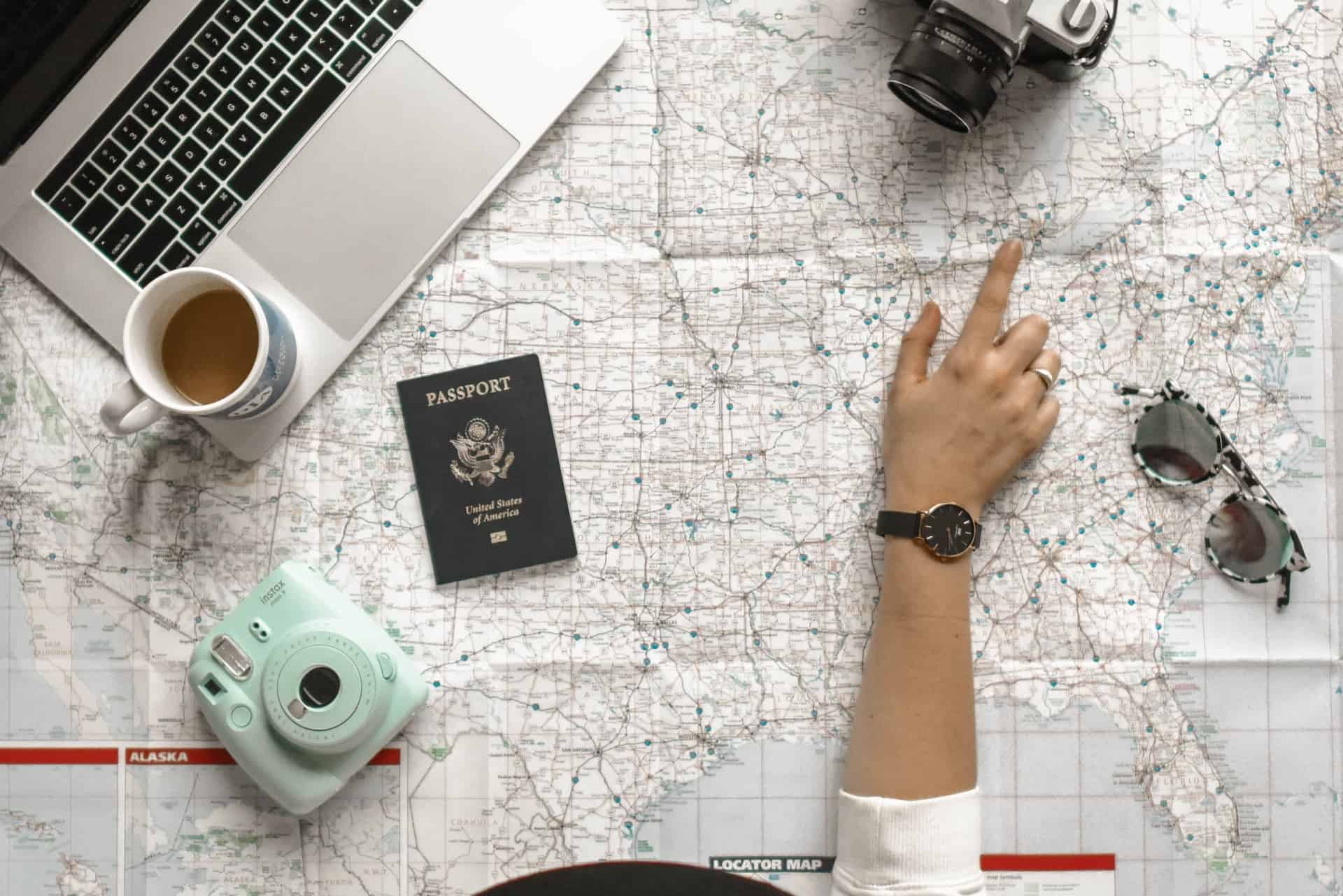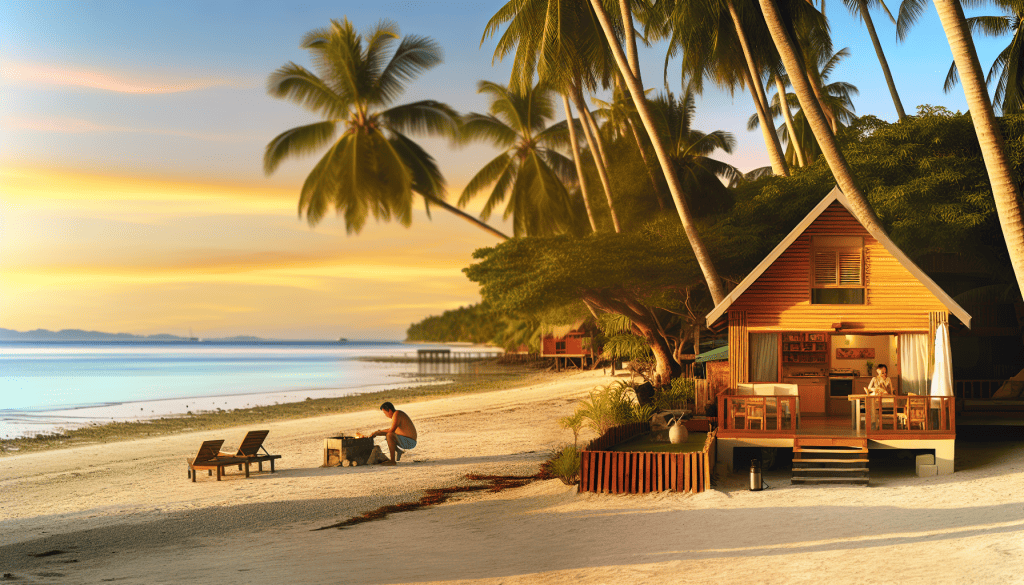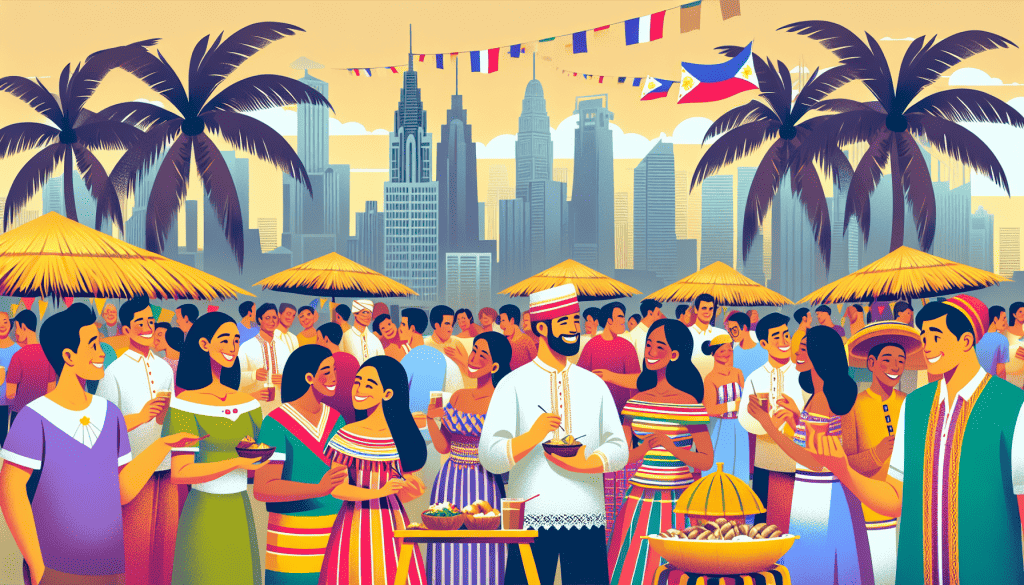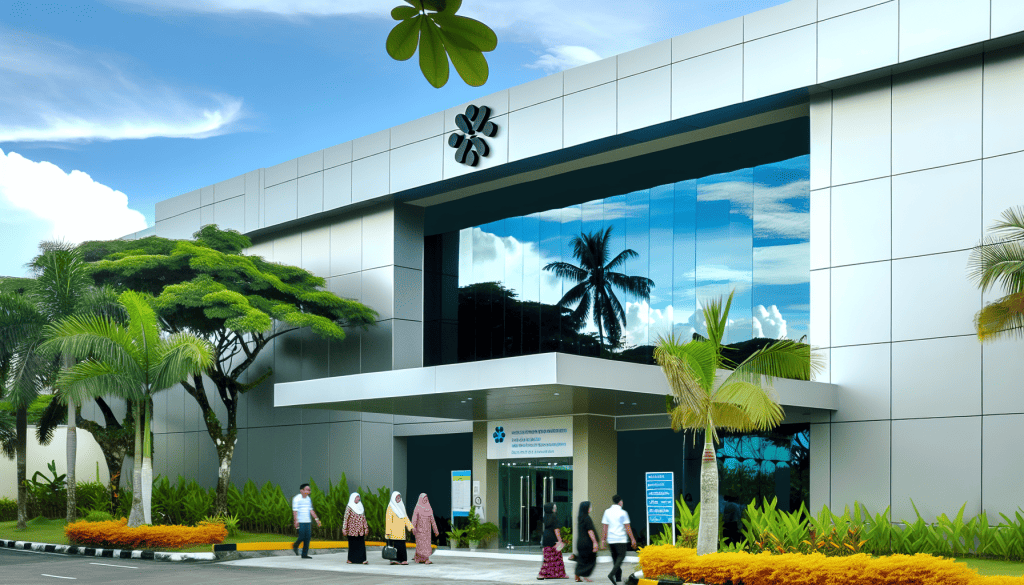Wondering about the practicalities of moving to the Philippines? From sorting out your visa to estimating living costs and blending into local life, we distill the essentials you need for a seamless transition. Dip into our guide for in-depth insights and advice tailored to pave your way to a rewarding life in the archipelago.
Key Takeaways of Moving to the Philippines
- The Philippines offers various visas, from tourist to retirement to work, each with its own requirements and processing times.
- Cost of living varies by neighborhood, with private healthcare and international schooling as preferred options by expats.
- Understanding the local legal, financial, and transportation systems is crucial for a seamless relocation experience.
Navigating the Visa Process for the Philippines

Moving to a foreign country always involves paperwork, and the Philippines is no different. The first step to your Filipino dream is securing a visa. Luckily, the Philippines offers a variety of visas to cater to everyone’s needs, including tourist visas, retirement visas, and work visas.
Whether you envision a brief visit or permanent life in the Philippines, familiarizing yourself with the visa process is key to a successful transition. Let’s unpack it!
Securing Your Tourist Visa
Should your visit to the Philippines be short-term, obtaining a tourist or non immigrant visa may be necessary. The process for non immigrant visa entails presenting a valid passport, a completed application form, and a return ticket. Rest assured, if you hail from one of the 157 countries enjoying visa-free privileges, you’re set to embark! Remember, though, that processing a tourist or non immigrant visa, usually takes about two to three weeks, so plan accordingly.
Understanding the Special Resident Retiree Visa
If you’re dreaming of spending your golden years surrounded by white sand beaches and a tropical marine climate, the Special Resident Retiree Visa (SRRV) might be your golden ticket. The SRRV, also known as a retirement visa, is specifically for foreigners who wish to retire in the Philippines. Besides offering the perk of permanent residence, the SRRV comes with financial benefits and the freedom to travel in and out of the country.
However, bear in mind that getting the SRRV requires a monetary deposit and a few special conditions.
Work Visas and Alien Employment Permit
If your journey to the Philippines is driven by employment opportunities, you’ll need a pre arranged employment visa and an Alien Employment Permit (AEP). These visa types of legal documents are necessary documents import permit you to work in the country legally. Keep in mind that the AEP is valid for one to five years initially but can be renewed for up to five years at a time.
In short, if you’re planning to work in the Philippines, make sure your paperwork is in order.
Setting Up Your New Home: Accommodation and Living Essentials

Once you’ve sorted out your visa, it’s time to find a place to call home. Selecting an appropriate neighborhood and comprehending the cost of living are pivotal in establishing your new life in the Philippines. A range of rental options ensures you’ll find a place that aligns with your budget and lifestyle.
However, setting up home extends beyond securing a place to live – let’s examine the fundamentals in a few words.
Finding the Right Neighborhood
Choosing the right neighborhood is all about finding a place that fits your lifestyle and budget. Some of the safest and most expat-friendly neighborhoods in the Philippines include Makati City, Dumaguete, and Davao City. But remember, the cost of living can vary significantly depending on the neighborhood, so consider your budget carefully.
Whether you prefer the urban hustle of a city center or the serene charm of a rural setting, the Philippines has something to offer everyone.
The Cost of Comfort
Though the Philippine cost of living is commonly lower than in many Western countries, prudent budgeting is advisable. The costs of housing, utilities, and domestic help can fluctuate based on your location and lifestyle. Also, keep in mind that electricity rates in the Philippines are among the highest in Asia.
However, you can save money significantly by choosing low cost energy-efficient appliances. With a little planning, you can enjoy a comfortable lifestyle without breaking the bank.
Embracing the Expat Life in Southeast Asia

Relocating to the Philippines goes beyond visas and accommodation; it involves immersing yourself in a new lifestyle. Engaging with the lively expat community, partaking in leisure activities, and delving into the local culture are just some of the experiences that await expats moving in the Philippines.
Are you geared up to dive into the expat lifestyle headfirst?
Joining the Expat Community
One of the best ways to settle into your new life in the Philippines is by joining the expat community. There are numerous expat groups and meetups, particularly in cities like Makati and BGC, where you can meet like-minded individuals and make new friends. Plus, with English being widely spoken, it’s easy to communicate and build connections.
Why not immerse yourself in the dynamic expat scene where most the expats choose to gather in a popular expat destination and popular tourist destination?
Leisure and Lifestyle
There’s never a dull moment in the Philippines, thanks to a plethora of leisure activities and cultural experiences. From water sports like surfing and snorkeling to exploring historical sites and attending vibrant festivals, there’s always something new to try.
Whether you’re an adrenaline junkie, a history enthusiast, or a gastronome, rest assured, activities tailored to your interests await at a UNESCO World Heritage Site.
Healthcare Considerations

Healthcare is a vital factor when relocating, and the Philippines doesn’t disappoint with its public and private healthcare options. The majority of expats lean towards private healthcare, owing to its superior standards and contemporary facilities. Navigating the public healthcare and the healthcare system here may seem daunting, so let’s make it more digestible for you.
Enrolling in PhilHealth
If you’re planning a long-term stay or permanent resident in the Philippines, enrolling in the Philippine Health Insurance Corporation (PhilHealth), the national health insurance program, is a good idea. It provides coverage for inpatient and outpatient benefits and is available to most expats, with an SRRV Visa or an ACR-I-Card. However, it’s essential to note that PhilHealth only covers public hospitals, which may not meet the standards you’re used to.
Private Healthcare Choices
For those who prefer a higher standard of care, private healthcare is an excellent option. Private hospitals in the Philippines offer modern facilities and adhere to international standards. Many expats also choose to get private health insurance, which can provide access to a wider range of medical services.
Regardless of your choice, it’s important to ensure that you have adequate healthcare coverage for your stay in the Philippines.
Education for Expat Families

If you’re moving to the Philippines with your family, education is likely a top priority. The country offers a variety of educational options for expat families, including public and private schools and international schools.
Let’s examine the educational alternatives to aid you in making the optimal choice for your children.
Choosing an International School
International schools are a popular choice among expats in the Philippines for their high-quality education and English-medium instruction. Choosing the right international school involves considering many factors, including accreditation, international organization, curriculum quality, and the school’s approach to education.
Remember, the best school is one that meets your child’s unique needs and helps them thrive.
Public vs. Private Schools
When comparing public schools and private schools in the Philippines, it’s important to consider factors such as curriculum, class sizes, and facilities. Private schools generally offer a more varied and personalized curriculum and smaller class sizes. However, they also come with a higher price tag.
Ultimately, the choice between public and private schooling will depend on your child’s needs and your family’s budget.
Financial Planning for Expats
Effective financial planning plays a significant role in your move to the Philippines. Grasping the local currency, initiating a bank account, and comprehending the local tax system are key steps towards a seamless transition.
Let’s dissect the financial dimensions of living in the Philippines, taking into account the role of the Philippine government.
Banking and Currency Exchange
Banking in the Philippines is relatively straightforward. Expats can open a bank account, and ATMs are readily available in the shopping malls in most cities. However, understanding the local currency and currency exchange rates is crucial, as it is how much stuff can affect your daily living expenses and international money transfers.
Hence, investing time to acquaint yourself with the Philippine Peso is advisable.
Tax Obligations and Dual Citizenship
Understanding your tax obligations is a critical part of financial planning in the Philippines. Here are some key points to keep in mind:
- Expats are required to pay taxes on income earned in the Philippines.
- Non-resident foreign nationals are not required to pay taxes on foreign earned income.
- It is important to consult with a tax professional to ensure compliance with all tax laws and regulations.
For those considering dual citizenship, it’s worth noting that it comes with potential tax advantages, allowing you to live and work in both countries.
Transportation and Getting Around
Traveling in the Philippines is an escapade on its own. Whether you’re commuting in a vibrant capital city, or island hopping amidst scenic landscapes, knowing the local transportation systems will facilitate smoother journeys.
Let’s investigate the diverse transport alternatives.
City Commuting
Navigating city commuting in the Philippines can be quite an experience. From jeepneys and tricycles to buses and taxis, there’s a variety of affordable ways to get around. However, peak commuting hours can be quite busy, so it’s important to plan your travels accordingly. And if you’re planning on driving, remember to have your native driving license in English or with a translation on hand.
Inter-Island Connectivity
One of the most exciting aspects of living in the Philippines is the opportunity to explore its stunning islands. With regular flights, ferries, and pumpboats, inter-island travel is relatively straightforward. Whether you’re planning a weekend getaway or an extended exploration, the islands of the Philippines are just a short journey away.
Legal Matters and Residency
Comprehending the legal facets of your move to the Philippines is instrumental for a hassle-free transition. Ranging from acquiring permanent residency to citizenship, an array of legal routes are available to assist you in making the Philippines your home. Let’s probe into these avenues.
Permanent Residency Pathways
Whether through marriage to a Filipino citizen or the Special Resident Retiree’s Visa (SRRV), there are several ways to secure permanent residency in the Philippines. Gaining permanent residency allows you to live, work, and enjoy the benefits of being a local.
So, whether you’re planning to tie the knot or enjoy a serene retirement, the Philippines welcomes you with open arms.
Citizenship by Naturalization
For foreign students and those who wish to fully embrace Filipino culture official language and lifestyle, obtaining citizenship through naturalization is an option. This process requires permanent residency, a clean criminal record, and a level of proficiency in English or a Philippine language.
While the process can be lengthy, becoming a Filipino citizen allows Philippine citizens to fully participate in local life and foreign affairs and enjoy all the benefits of citizenship.
Bringing Pets and Personal Belongings
Relocating to a new country frequently entails transporting your cherished pets dependent children and personal belongings. The process, encompassing pet relocation procedures to shipping personal effects, necessitates meticulous planning when moving to the Philippines.
Let’s examine how you can ensure a move with all your essentials intact.
Pet Relocation Procedures
Bringing your furry friends to the Philippines requires some planning. Here are a few things to keep in mind:
- Your pets will need a Vet Health Certificate.
- They will need to undergo a 30-day quarantine upon arrival.
- Be mindful that some dog breeds are prohibited in the Philippines.
With careful preparation, you can ensure a smooth transition for your pets.
Shipping Personal Effects
Shipping your personal belongings to the Philippines is relatively straightforward. You can ship your items by air, land, or sea, and there are many cargo logistics shipping companies that specialize in personal effects transportation. However, do note that certain items cannot be shipped to the Philippines, so it’s important to check the regulations before packing your boxes.
Summary
Moving to the Philippines is a thrilling adventure filled with exciting opportunities and challenges. From securing the right visa and finding a suitable home to understanding the healthcare and education system, and planning your finances, there’s a lot to consider. But with careful planning and a sense of adventure, you can embrace the expat life and make the most of your new home in the Philippines. Here’s to your exciting Philippine journey!
Frequently Asked Questions
Is it a good idea to move to the Philippines?
Moving to the Philippines can be a great idea due to the warm and hospitable culture, affordable cost of living, accessible healthcare, and natural beauty of home country, but it’s important to be aware of safety concerns.
What are the requirements to move to the Philippines?
To move to the Philippines, you will need a visa, and for long-term purposes, you’ll have to apply for long-term visas. Some countries allow visa-free entry for a short period, but you’ll need the necessary visa for an extended stay.
How much money do you need to live comfortably in the Philippines?
You’ll need at least a $600 monthly budget to live comfortably as a single person in the Philippines, and a family of four will need around $2,500 per month. Keep in mind that living in major cities like Manila and Cebu City can be more expensive.
Why would people move to the Philippines?
People move to the Philippines for its beautiful natural scenery, which includes over 7,000 islands, white sandy beaches, and delicious exotic fruits. The warm marine climate, low cost of living, and top-ranked beaches are also attractive factors for most expats.
How can I secure a tourist visa for the Philippines?
To secure a tourist visa for the Philippines, you’ll need a valid passport, a completed visa application form, and a return journey ticket. Processing typically takes two to three weeks.
Sources: https://en.wikipedia.org/wiki/Expatriate

















Add comment